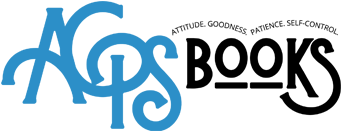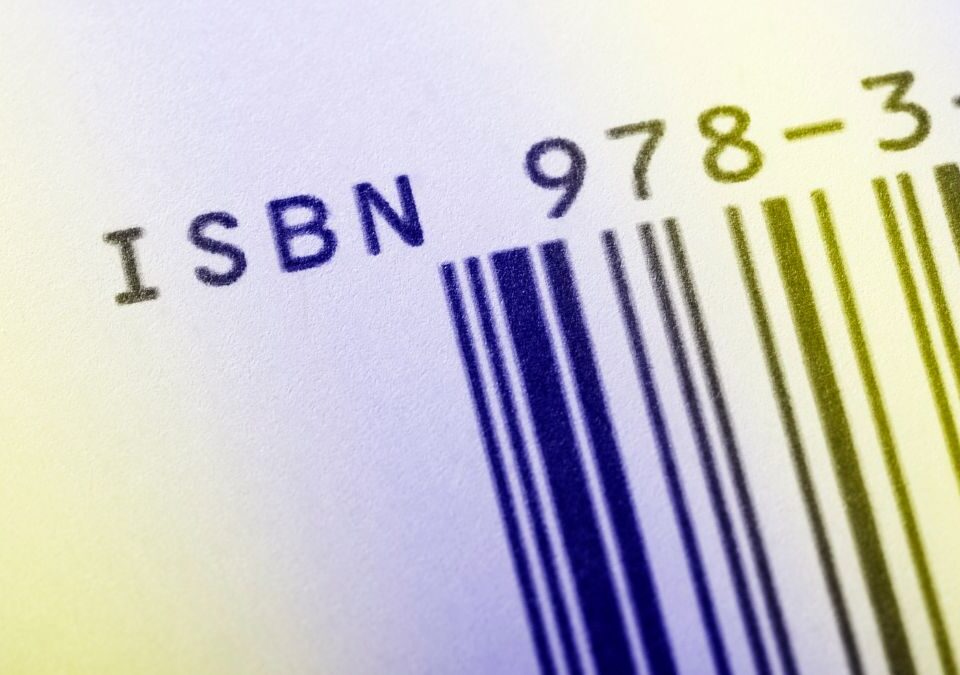
How Much Does It Cost to Publish a Book? A 2025 Guide to Real Costs
September 24, 2025
Top 7 Christian Book Publishers Every Aspiring Author Should Know
September 24, 2025Have you ever closed a book and found yourself thinking about how you would have edited it differently? If so, you might be a natural future editor. Learning how to become an editor (especially how to become a book editor) is an exciting journey for those who love words. It’s not just about catching typos, it’s about helping stories shine. In this article, we’ll explore the path to becoming an editor for books in a casual, inspirational way. Whether you dream of freelancing or wonder how to become an editor at a publishing house, these steps will guide you toward your goal. Let’s dive in!
Did you know? Toni Morrison started her publishing career as an editor at Random House, where she “championed a new generation of writers” long before winning the Nobel Prize as an author. Her story shows that great editors can make a huge impact!
What Does a Book Editor Do?
Before becoming an editor, it’s important to understand what the job really entails. A book editor’s role can range from big-picture development to nitty-gritty proofreading. In other words, editors wear many hats. One seasoned editor famously described the job as being “part proofreader, part therapist, part in-house champion” for the author, and it’s true! You’ll be encouraging writers, polishing prose, and ensuring the final book is the best it can be.
There are also different types of book editors:
- Developmental Editor: Works with the author on shaping the story, structure, and content from an early draft.
- Line Editor: Refines the language and flow line by line, focusing on style and clarity.
- Copy Editor: Fixes grammar, punctuation, and consistency issues, ensuring accuracy and a smooth reading experience.
- Proofreader: The final set of eyes to catch any typos or errors before publication.
An editor might do one or all of the above, depending on their role. Some editors work in-house at publishing companies (even helping decide which books to publish), while others are freelancers who authors hire to polish their manuscripts. In both cases, the goal is the same: take a good story and help turn it into a great book.
How to Become an Editor: Step-by-Step Guide
Becoming a book editor doesn’t happen overnight, but if you’re passionate about stories and willing to put in the work, it’s absolutely achievable. Here are seven key steps on how to become a book editor and kickstart your editing career:
Step 1: Cultivate Your Love of Books and Language
All great editors start as avid readers. Immerse yourself in literature of all genres. Pay attention to how stories are crafted and how sentences flow. The more you read, the more you develop an instinct for good writing. Likewise, write as much as possible, even if it’s just journaling or blogging. Strong writing skills go hand-in-hand with editing skills. This passion for the written word is the foundation of your career. After all, if you’re going to spend your days correcting and improving text, you need to genuinely enjoy words and storytelling!
Step 2: Get a Relevant Education (and Keep Learning)
Do you need a fancy degree to become an editor? Not necessarily, but it can help. Many successful book editors have at least a bachelor’s degree in English, Journalism, Communications or a related field. College courses can improve your grammar, writing, and critical thinking, which are crucial for editing. In fact, one industry guide suggests that having a solid education (like a B.A. in English or a similar field) gives you a firm grasp of language and a head start for aspiring book editors. If college isn’t in the cards, don’t worry. You can self-educate by taking online courses in editing or writing, reading grammar books, and practicing on your own. What matters most is that you continually improve your command of the language.
Step 3: Learn Editing Tools and Industry Knowledge
Modern editors need to be tech-savvy and industry-aware. Get comfortable with word processing and editing software (Microsoft Word’s Track Changes is a must-know tool). Familiarize yourself with style guides like the Chicago Manual of Style (commonly used for books) or AP Stylebook (for journalism). These guides are essentially rulebooks for editing and will frequently be your reference. It’s also wise to understand the basics of the publishing world, how a manuscript goes from draft to published book. Explore resources about the publishing process, formats, and distribution. (For example, understanding different publishing formats and services can give you a broader perspective on how books are produced.) The more you know about how publishing works, the better you can perform your role within it.
Step 4: Gain Practical Experience (Start Small)
Experience is often the best teacher. Don’t wait for someone to hand you an editor title, start editing now in whatever ways you can. You could:
- Volunteer: Offer to proofread or copy edit for your school newspaper, a local newsletter, or a friend’s blog. Any hands-on practice is valuable.
- Freelance on small gigs: Websites like Upwork or Fiverr have many requests for basic editing or beta reading. Taking on a few small freelance projects can help you learn to work with authors and manage deadlines.
- Personal projects: Take a favorite book or article and try “editing” it for practice (just for yourself). How would you improve the clarity or flow? This can be a fun exercise to sharpen your skills.
At this stage, the projects might not be glamorous, maybe you’re correcting a friend’s ebook or helping an aspiring author fix plot holes, but every bit of practice counts. You’ll start developing an “editor’s eye” for catching errors and strengthening writing. Plus, you can save your best work as samples for a future portfolio.
Step 5: Build Your Portfolio and Credibility
As you gain experience, start collecting proof of your editing skills. A portfolio is essential when you’re ready to approach clients or employers. Your portfolio could include before-and-after samples of text you’ve edited (with the writer’s permission) or any projects you’ve worked on. If you’ve edited a published book or article, even better, list it in your portfolio or résumé.
This is also a good time to establish an online presence. Consider creating a simple website or LinkedIn profile that highlights your editing services and background. You can even start a blog to discuss grammar tips, writing, or publishing; this not only improves your visibility but also shows your expertise. In the eyes of clients or hiring managers, a credible online presence and portfolio can set you apart from other beginners.
Don’t forget to seek out additional training or credentials. Short courses or certificates in editing (for example, those offered by professional organizations like the American Copy Editors Society (ACES)) can boost your résumé. These courses teach real-world editing scenarios and often connect you with seasoned editors. It’s a great way to keep learning and show that you take your craft seriously.
Step 6: Network with the Writing and Publishing Community
Who you know can be just as important as what you know in the publishing world. Networking might sound intimidating, but it can be as simple as joining communities of like-minded book lovers. Here’s how:
- Online networking: Participate in writers’ and editors’ groups on social media. There are many Facebook groups and Twitter conversations (#amediting, #writingcommunity) where people share advice and even job leads. Platforms like LinkedIn are also useful, connect with other editors, authors, and publishers there.
- In-person events: If possible, attend writing workshops, book fairs, or publishing conferences. Meeting authors and industry professionals face-to-face can leave a strong impression. Don’t be afraid to mention you’re an aspiring editor, you never know who might be looking for some help or know of an opportunity.
- Join professional associations: Organizations for editors, such as ACES or the Editorial Freelancers Association, often have forums, job boards, and local meet-ups. They’re perfect for learning about the industry and finding mentors.
Networking isn’t about instantly getting a job; it’s about building relationships. Over time, the connections you make can lead to referrals or insider knowledge of job openings. Plus, other editors can share their experiences and tips, it’s inspiring to hear how different people made their editing careers happen.
Step 7: Start at the Bottom (Editorial Assistant or Freelance Editor) and Grow
Now for the big leap: actually becoming a working editor. There are two main paths here, and you can choose one or even do both over time:
- Traditional Publishing Path: This usually means getting a job as an Editorial Assistant at a publishing house or magazine. Editorial assistant positions are entry-level jobs where you support senior editors, handling tasks like proofreading, fact-checking, or coordinating with authors. It’s like an apprenticeship: you learn the ropes from the inside. If you’re wondering exactly how to become an editor at a publishing house, this is it. You typically apply for assistant roles, spend a couple of years gaining experience, and then get promoted to associate editor and eventually editor. Big publishers (like Penguin Random House, HarperCollins, etc.) often have training programs or internships that lead into these roles. Keep an eye on job boards (even Indeed’s career guides and company sites) for openings. It can be competitive, but perseverance pays off.
- Freelance Path: If a 9-to-5 in NYC isn’t your style, you can start working as a freelance book editor from anywhere. Initially, you might take small gigs (as mentioned in Step 4) and gradually build a client base. Set up a professional website, list your services (what kind of editing you do, what genres you specialize in), and ask early clients for testimonials. As you complete more projects, your reputation will grow. Freelancing requires a bit of business savvy, you’ll need to set your rates, manage time between multiple projects, and continuously market yourself. But it also offers flexibility: you can choose projects you love and work from home on your own schedule.
Neither path is “better”, some editors even do both, freelancing on the side while working at a company. What’s important is getting that first real editing role. Don’t shy away from starting small. Every famous editor began as “the newbie” at some point. Stay humble, keep learning from each project and colleague, and soon enough you’ll find yourself moving up. As you progress, you may choose to specialize (for example, becoming known as the go-to editor for YA fantasy novels, or an expert nonfiction science editor). Specialization can further boost your career, but early on it’s fine to try a bit of everything.
Final Tip: As you work on becoming an editor, always remember to maintain your genuine love for storytelling. Editing is a labor of love; it requires patience, empathy, and a commitment to helping writers be their best. There will be challenges, a rushed deadline, a complicated manuscript, or a competitive job process, but stick with it. The reward is seeing a book that you’ve nurtured finally reach readers. And who knows, one day an author might just thank you in their acknowledgments! Keep learning, keep connecting, and keep that red pen (or track-changes cursor) ready, your editing career is waiting to unfold.
Conclusion
If you’ve read this far, you already carry the spark that makes great editors: curiosity, care for language, and a desire to help stories land with readers. The path of how to become an editor isn’t a straight line; it’s a series of small, steady choices, reading deeply, practicing often, learning industry tools, and showing up for writers with empathy. Whether your next step is an editorial assistant role, a first freelance project, or polishing your portfolio, keep listening for what the page is asking you to do. Progress can be quiet, but it compounds.
If you’d like a sounding board, a skill check, or support for a specific manuscript, we’re here to help, lightly, respectfully, and on your terms. Reach out and tell us what you’re working on, what you hope to grow in, or where you feel stuck. We’re glad to share options, timelines, or simple next steps, and you can take whatever’s useful. Wherever your journey leads, keep editing with generosity and courage; the books you’ll help shape are already grateful for you.




